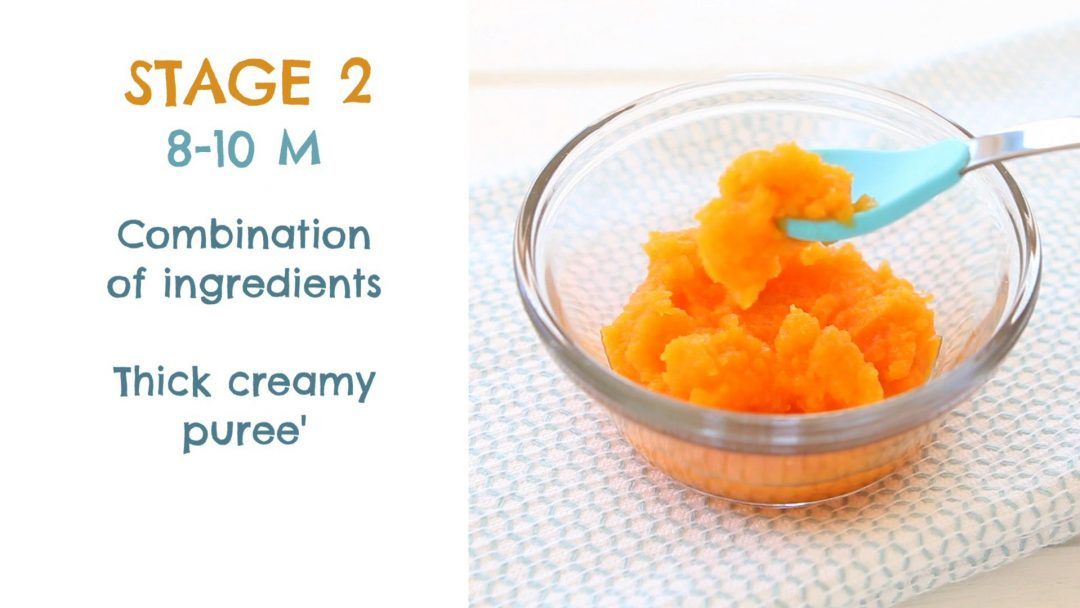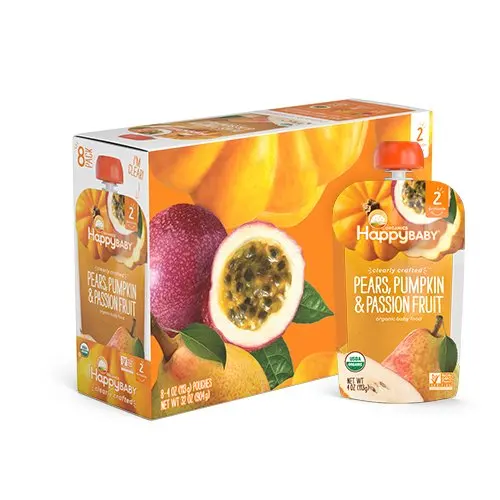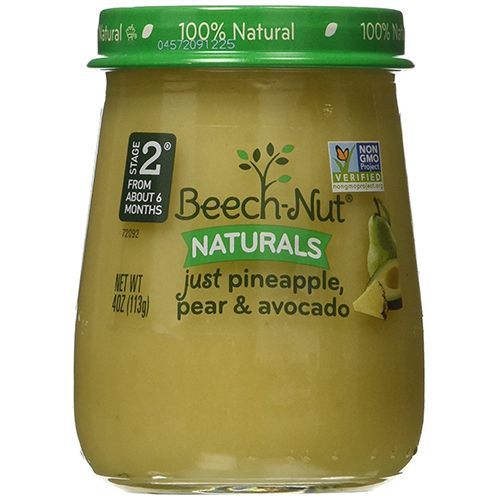Baby food second stage
What It Is, When to Start, and Options to Try
Accompanying your child through the different stages of learning how to eat real food is an exciting journey. Sometimes, along with the sense of pride — Look, they polished off the whole jar! — you can feel a little confused. How are you supposed to navigate the milestones?
Let’s start at the beginning: What do the stages of baby food mean, anyway?
Rome wasn’t built in a day, and your baby’s digestive system won’t make the leap from liquid to solid in one day either. That’s what the stages of baby food are for — to help your baby manage the mechanics of eating and to make the transition easier on your baby’s digestive system.
Defining the stages across the brands
While the different stages of baby food aren’t standardized (it would make your life easier if they were!), most popular brands more-or-less follow these four stages:
- Stage 1: 4 to 6 months (watery puree of a single ingredient)
- Stage 2: 6 to 9 months (thicker texture that is strained or mashed)
- Stage 3: 10 to 12 months (mush that has soft, chewable, small chunks)
- Stage 4: After 12 months (finger foods and small, soft pieces of foods you share from your own supper)
What is the difference between stage 1 and stage 2 food?
Stage 1 foods are pretty watery. They’re pureed into a smooth paste that can drip off a spoon easily, so stock up on your bibs. These foods are usually made of a single ingredient: oatmeal cereal, apple, carrots. Your baby will start off eating about half a teaspoon of this.
Stage 2 foods get more exciting. These are strained or mashed into a dense paste. They’re made with a combination of foods that can include legumes and even meats or fish. They may combine flavors, like fruit and veggie blends. Your baby’s appetite is growing and you’ll have to keep pace with bigger portions.
At around 6 to 9 months, your baby is probably ready to move on to stage 2 foods. Not every baby will stick to this schedule simply because every child is a world to their own.
Here are some signs that your child is ready to move on:
- Tongue reflex: At around five months, your child will start losing their tongue thrust reflex and won’t immediately push out the food that you try to feed them.

- More please: They’ll easily polish off the stage 1 foods and look hungry for more.
- Variety: They’ll have eaten foods from all the food categories (vegetables, fruits, legumes, grains, meat) and shown no allergy or intolerance.
- Enjoyment: They’re managing spoonfuls of stage 1 foods easily, mouthing and swallowing happily.
At this exciting stage, feel free to give your baby most types of foods. By offering them a wide range of tastes and textures, you’re giving them a foundation for healthy eating habits — as well as making it easier for yourself. Keep in mind the following safety points:
- Choking hazards: Avoid nuts, seeds, and popcorn at this stage. And make sure to slice round foods like grapes and hot dogs lengthwise.
- No honey: Children younger than 12 months should not be given honey because it could lead to a botulism infection.
- No juice: Follow AAP guidelines and stick with breast milk, formula or a little water and steer clear of juices.

- Safe feeding: Always strap your child into their high chair and keep an eye on them while they’re eating.
And if you’re wondering about peanuts, here’s the scoop: A 2017 release from the National Institutes of Health suggests exposing children to peanut-containing foods as early as 4 months old. (Wait till 6 months for children with mild or moderate eczema.)
Surprised? Don’t be. A recent study suggested that Israeli kids rarely suffer from peanut allergies because they’re munching on Bamba, a peanut-based snack, from as early as 3 months. Talk to your doctor about suggested safe ways to incorporate peanut products into your little one’s diet.
What’s on the menu for stage 2 baby foods? Basically, you can go the store-bought or the homemade route. Or you can mix both depending on how much time you have. It’s up to you and your personal schedule.
Here are tasty ideas for both options.
Store-bought stage 2 baby food
- Plum: These organic blends come in easy-to-transport pouches.
 Try pear, spinach, and pea, or banana and pumpkin.
Try pear, spinach, and pea, or banana and pumpkin. - Beech-Nut: Options are available in jars and pouches. Serve up some apples and bananas or pineapple, pear, and avocado.
- Earth’s Best: Another organic option, in pouches or jars. Try sweet potato, barley, and garbanzo or pasta with tomato and white bean.
- Gerber: A classic, whether served up from plastic tubs, jars, or pouches. Flavor combinations include peach mango and oatmeal or chicken noodle dinner.
Remember to monitor your little one while they’re eating. Pouches are handy, but the caps can be a choking hazard. Glass jars are at risk of breaking, so keep them out of baby’s reach. Your baby should always enjoy snacks and meals with attentive adult supervision.
Homemade stage 2 baby food
Cooking up a storm for your baby’s budding taste buds at this stage doesn’t have to be challenging. Here are a few recipes to get you going. (You can find even more baby food recipes here. )
)
Don’t shy away from spices and herbs: your baby will appreciate the added flavor, and the micronutrients in them will give their immune system a boost.
- Apple, butternut, and carrot: Boil the ingredients until they test soft with a fork. Drain some of the water, but set it aside in case you need to thin the mixture. Sprinkle in a little curry and blend.
- Blueberries and chickpeas: You can cook up your own chickpeas or use a prepared version to save time. Mix equal amounts of blueberries and chickpeas. Blend and add breastmilk, formula, or water to get the right consistency. You can also add in some rice for extra oomph and texture.
- Salmon with roasted zucchini and fennel: Spray the salmon and vegetables with oil and broil for about 15 minutes. Add chopped parsley and blend. You can thin the mixture with breastmilk, formula, or water.
Enjoy this stage with your baby because it won’t be long before they move on to the next stages. And then, sooner than you think, you may be facing competition for that last slice of caramel-topped cheesecake.
And then, sooner than you think, you may be facing competition for that last slice of caramel-topped cheesecake.
What Is Stage 2 Baby Food & How To Get Started
When your infant moves from an all-milk diet into pureed baby food and formula, it’s a cause for celebration.
This interest in new foods is a sure sign they’re growing up — and that one day, their feeding schedule will become less hectic — that needs a nurturing focus on the part of the parents. It also requires a little bit of patience to see the process through.
But did you know that different age ranges require different baby puree combinations? If your little one is between 6-9 months old, here’s everything you need to know about stage 2 foods for baby meals.
What is stage 2 baby food?
Stage 2 is what it sounds like: the second step of a baby’s food stages and ages.
This type of baby food is suitable for children 6-9 months old. When you open up a jar, you’ll find a thick purée of solid food mashed into a pulp. Combinations of foods, like sweet potato and apple, are common.
Combinations of foods, like sweet potato and apple, are common.
The main goal with baby food puree isn’t the taste but the texture. You’re trying to wean your baby away from their smoother breast milk diet so they can become used to the consistency of solid foods with this in-between consistency.
Every baby has a different pace for adapting to step 2 purées. Some will be ready for the next stage of baby foods earlier than others. If the dates don’t fall too far outside of the regular age bracket, there shouldn’t be cause for concern.
However, if you remain worried, it’s best to contact your pediatrician for dietary advice.
MapleHorizons - pixabay.com
What is the difference between stage 1 and stage 2 food?
Stage 1 baby food is made for infants 4-6 months old. It usually consists of smooth or watery purees made from a single-ingredient paste. In comparison, stage 2 baby food is designed for infants 6-9 months old, and is a thicker texture, between mashed and puréed. It may include combinations of meat and veggies or fish.
It may include combinations of meat and veggies or fish.
After stage 2, you need to reach several other feeding milestones:
Stage 3 baby food is for 10-12 months. Meals should have small pieces of food in them to encourage your baby to chew more.
Stage 4 baby food is for one year and over. This is a transitional stage for your little one, where they’re reliant on standard baby food recipes but will be experimenting with regular, healthy meal options — or “real food.” By stage 4, you’re usually just about finished weaning your baby.
Parenting tip: You’ll find no standardized metric for what constitutes the “right” type of food texture for your baby. You’ll see variation between baby food brands. Because of this, it’s best to view this description of baby food stages and ages as a general guideline rather than a hard-and-fast rule. Use common sense, and be attuned to your baby’s personal preferences.
5686750 - pixabay. com
com
When do we start stage 2 baby food, and how?
How long do babies eat stage 1 food? Until they’re 6 months old. After that, you’ll switch over to stage 2.
Before you make the switch, you’ll need to ensure that your baby is equipped for this milestone. If they struggle with trying different foods, it can be a red flag for choking hazards.
Signs your baby is ready to start stage 2 food:
No allergic reactions or food intolerances to stage 1.
No automatic tongue reflex that pushes food away when you try to feed them.
Finishing off their food quickly and showing an interest in eating more.
Once you’re sure your little one will be OK with a new type of food, it’s time to make your shopping list. Focus on baby foods with an exciting texture or taste, and be diverse with your combinations. By picking out a wide variety of meals, you’re adjusting your child to a large selection of flavors, which will help avoid the pitfalls of picky eating.
Fruits, either puréed or paste.
Vegetables, either puréed or paste. If you include grapes in your homemade baby food diet at stage 2, they must be cut in half.
Meat and fish, puréed or as paste.
Premade organic baby food options.
Remember, always include formula or breastfeeding as part of your baby’s feeding schedule. Prioritize feeding on-demand or when your baby expresses hunger.
At the beginning of your baby’s transition to stage 2, make sure to stick to purees and pastes. Toward the 8-9 month mark, you can introduce finely mashed solid foods, as per American Academy of Pediatrics guidelines. Read up on the 9-month-old feeding schedule to know more.
MapleHorizons - pixabay.com
What are some options for stage 2 baby food?
Looking for some store-bought baby food combinations that offer stage 2 purees? Try the following brands:
Gerber.

Beech-Nut.
Plum baby food.
If you want to make a baby food puree on your own, try the following ingredients:
Mangos.
Asparagus.
Carrots.
Bananas.
Peaches.
Applesauce.
Rhubarb.
Beets.
Here are a few more tips for the best baby food experience
Never leave your baby unattended in a high chair while they’re eating. They could be at risk of choking.
Let your baby be messy with their food! Learning the texture of the items in front of them and whether or not they’re edible is part of their growth. Holding the food lets them develop their pincer grasp.
If your baby looks upset when trying out a new piece of food, it doesn’t mean they dislike the food — they may just be thrown off by the texture. Try that food combo a few more times to see if they adjust or if you end up with the same result.
 If they dislike it after a few attempts, move on to another option.
If they dislike it after a few attempts, move on to another option.
Looking for other baby food supplies to make mealtime easier? Browse through Gopuff’s selection of easy-to-order goods that can be delivered right to your home.
Infant formula for newborns (0 to 6 months) | Baby food for babies
This is a complete baby food from the birth of a baby. If breastfeeding is not possible for some reason. Products for the smallest are called adapted, because their composition is as close as possible to mother's milk.
In the article we will talk about how to choose baby food for babies. Let's talk about what mixtures are for newborns, how to choose the right one, and how to understand that it did not fit. And also about the correct transition from one mixture to another.
Classification: first select the type of mixture
Baby food should be recommended by a pediatrician. Be sure to check with a doctor who knows your child. The pediatrician will take into account all the factors influencing the choice: the age of the baby, the characteristics of his health, the method of birth - naturally or through a caesarean section, the date on which he was born, the weight of the child, the risk of allergies.
The pediatrician will take into account all the factors influencing the choice: the age of the baby, the characteristics of his health, the method of birth - naturally or through a caesarean section, the date on which he was born, the weight of the child, the risk of allergies.
Healthy babies who were born at term naturally have a digestive system that is mature for their age. They are prescribed regular baby food, which is produced according to the standards established by the Ministry of Health, which means it contains all the necessary nutrients. It is important for parents only to monitor the timely change of stage. After all, babies from six months need a different composition, which is present in products labeled with the number two.
Manufacturers of adapted formulas for newborns compete in only one indicator - the proximity of the composition to breast milk. For example, the latest discovery of scientists made it possible to add oligosaccharides of mother's milk to it. They are involved in the formation of the child's immunity, which, as you know, the mother transmits when she breastfeeds. At the end of 2019, such products are considered the closest to breast milk.
They are involved in the formation of the child's immunity, which, as you know, the mother transmits when she breastfeeds. At the end of 2019, such products are considered the closest to breast milk.
Under the Materna brand, this is Materna Gold HM-O.
Read more about breast milk oligosaccharides in our article.
By age
All baby food is usually divided into age stages:
- Stage 0 - for premature babies (but not all brands have this stage)
- Stage 1 - 0 to 6 months
- Stage 2 - 6 to 12 months
- Stage 3 - from 12 months
The mixture can be fed up to 1.5-2 years. By this time, the children are completely switching to adult food. You can supplement at night if the baby wakes up to eat. Or cook baby cereals on them. They are very nutritious and enriched with additional vitamins. Children who do not eat well are sometimes supplemented with formula. Some manufacturers create stage 4 products just for such cases.
There are products that are not age-labeled. This is a special diet that is prescribed by a doctor according to indications. The packaging must indicate at what age it can be used.
Composition
By composition, products for newborns can be divided into classic and enriched.
- Classic . The Materna line includes Materna Classic, Materna Gold and kosher dairy products Materna Mehadrin. They are usually suitable for all healthy children. After all, these products are created according to the norms of the Ministry of Health and contain all the necessary components for the nutrition of babies.
- Enriched . - This is a classic diet, supplemented with vitamins and trace elements. Materna has Materna Extra Care. This product has been the most popular among our customers and around the world. In 2017, for example, he was recognized as the best in Israel. Now the leading place is occupied by Materna Gold, as the product closest to breast milk.

As intended
Separately, we can talk about special baby food, which is prescribed by a doctor in accordance with the health characteristics of the baby. It can be both basic for the child and recommended for the period of illness or recovery after it. Let's look at the main types of special mixtures.
- Low lactose . Recommended for children diagnosed with dysbacteriosis or other digestive disorders. In the case when the enzymes in the intestines are not enough to digest milk sugar - lactose. In the Materna line, this is Materna Comfort.
- Lactose free . They are used in case of congenital lactase deficiency or galactosemia, a disease characterized by the inability to absorb certain carbohydrates. This is a very rare case. If lactase deficiency appeared against the background of indigestion, then a low-lactose product is most likely suitable. So the body is more likely to start producing its own lactase enzyme.
 Be sure to discuss this with your doctor. Materna Soy is a soy lactose-free product in the Israeli baby food line.
Be sure to discuss this with your doctor. Materna Soy is a soy lactose-free product in the Israeli baby food line. - Dairy-free . They are prescribed for allergies to lactose and milk protein casein. In such products, animal protein is replaced by vegetable protein. As, for example, in Materna Soy blend.
- Sour milk and goat milk . In fact, they are very close to the classical ones. The only difference is that the protein is in them in an easier to digest form.
- Antireflux to relieve the symptoms of severe regurgitation. They are thicker in consistency and more difficult to throw back into the baby's esophagus. Most often prescribed in addition to regular food to reduce the amount of regurgitation.
- Hypoallergenic or hydrolysed . They are created on the basis of a split protein and are prescribed to children in cases of very serious allergies. This product is bitter in taste, kids do not like it. Therefore, it is appointed in extreme cases, when there are no other options.

- Night . Produced on the basis of starch, which takes longer to digest and maintains a feeling of satiety.
- For premature babies . They are high in protein and calories. They are designed to help the child quickly gain weight. After the indicators reach the norm, the baby is transferred to a normal diet. Read more about how to choose a formula for a premature baby, read here.
- Based on vegetable protein . They are used in case of allergy to animal protein casein. And they are the main food during the period of rotavirus infection, when the use of dairy products is contraindicated.
By consistency
Most baby products are dry mixes that are diluted in warm boiled water. But there are also ready-made diluted products that only need to be heated.
How to make the right choice
There is only one answer to this question - listen to your pediatrician and be aware of what is on the market. You can contact us for a free consultation.
You can contact us for a free consultation.
Zinaida Rassadina
Pediatrician, experience - 14 years
How to tell if a mixture is not suitable
Here are some signs that you need to think about changing the mixture. But it is important to understand that there are diseases that have the same symptoms. Therefore, before changing something, you need to take tests and find out the reason. And only then choose the right food.
- Baby spits up profusely in a fountain
- The stool has a liquid or foamy consistency and an unusual, often green color
- The baby is worried after eating - he suffers from colic, bloating
- Skin rash appeared
If it happens that you need to change the food, it is important to do it gradually. Read about the correct scheme for switching to a new mixture in our article.
Russian Union of Pediatricians
Home > Information for parents > Advice for parents > Feeding children aged 1 to 3 years
Nutrition for children aged 1 to 3 years
The period from 1 to 3 years of life is a crucial stage in the transition to an adult type of nutrition, which has certain features. In order to ensure that all the necessary nutrients enter the child's body and at the same time prevent an excess of individual nutrients, nutrition should be balanced and varied.
In order to ensure that all the necessary nutrients enter the child's body and at the same time prevent an excess of individual nutrients, nutrition should be balanced and varied.
The daily amount of food for children aged 1 to 1.5 years should be 1000-1200 g, from 1.5 to 3 years - 1200-1500, the amount of food in one feeding should not exceed 300-350 ml. The diet consists of three main meals per day and two snacks. It is considered optimal when breakfast is 25% of the total energy density of the diet, lunch is 30–35%, dinner is 20%, and additional meals are about 10%. In general, the child can eat the same food as the rest of the family.
In the diet of a child of 1-3 years of age , must be present daily: meat of animals or poultry, dairy and sour-milk products, vegetables, fruits, bread, cereals, vegetable and butter; fish and eggs are included in the diet 2-3 times a week.
Cereal products: bread - 2-3 servings per day, cereals and side dishes - 1 time per day
Fruit and/or vegetables: at least 5 times a day
Dairy products: at least 3 servings per day (including those used to make cereals, yoghurts, fermented milk drinks, cottage cheese, infant formula or breast milk).
Domestic pediatricians recommend, when compiling a diet for children aged 1–3 years, preference should be given to specialized children's dairy products of industrial production that meet high quality requirements and safety indicators for this age. Most children's dairy products are additionally enriched with vitamins and/or minerals and other biologically active components, taking into account the physiological needs of children of this age. At the same time, in foreign recommendations, children over 1 year old are offered the gradual introduction of whole cow's milk, which is rich in fats necessary for proper growth and development, the absorption of vitamins A and D, the development of the brain and nervous system of the child.
Meat dishes: 2-3 times a day
Fish dishes: 2-3 servings per week
Eggs: 2-3 per week
Dietary fats: 3-4 teaspoons of butter and/or vegetable oils per day
When cooking, use the minimum amount of salt and sugar, and do not add them to industrial products.










